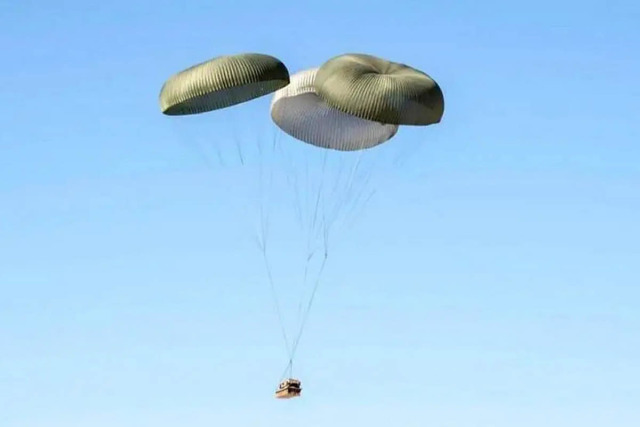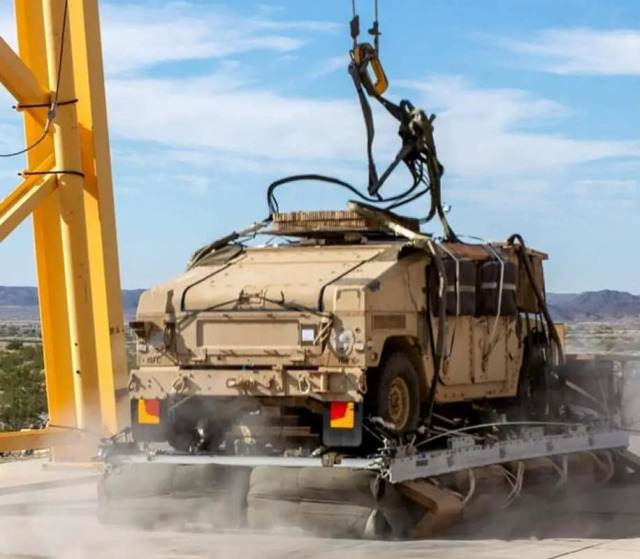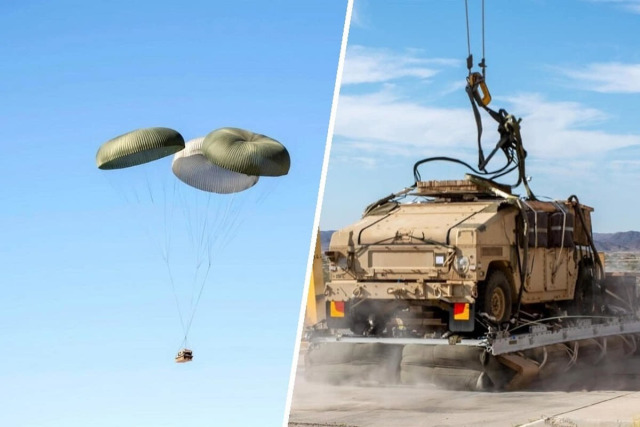According to the official press release of the US Army Internet portal, a new parachute system for dropping heavy loads is currently being tested at the Yuma training ground. The purpose of the event is to significantly reduce the time of cargo preparation for landing and unpacking after landing. The cargo parachute system, called the Rapid Rigging De-Rigging Airdrop System (RRDAS), is designed to guarantee the delivery of equipment to the landing airfield or supplies to troops from the air faster than before.
The dropped loads are usually stuffed with a honeycomb-like cardboard material between a vehicle or other heavy equipment and a steel pallet on which the cargo is parachuted to the ground. According to the army, even with a perfect landing, damage continues to occur, as several layers of honeycombs are destroyed when they hit the ground.
In RRDAS, it is proposed to avoid this by replacing the cells with ten reusable airbag modules. Self-inflating airbags can be used from a minimum height of up to 230 m above the ground and can withstand a load of 2.25 to 10 tons.

Cargo parachute system in the airAs explained by the assistant manager for the supply of goods by air in the Office of Combat Support and Combat Service Support of the U.S. Army, Major Matthew Rohe (Matthew Rohe):
"When the cargo is flying through the air, the surrounding air creates pressure on all fabric airbags. When hitting the ground, the airbag modules absorb the payload, so we don't need as much cellular material as with the current technique."
It is assumed that reducing the use of shock-absorbing material will reduce the time spent on cargo preparation by 25%. But much more important is the 40% time savings on unpacking cargo landing on the ground. This means that the dropped cargo can be taken out of the landing zone much faster, and, for example, the landing equipment is put into battle.

Bench landing testAccording to David Emond, product manager of the US Army Soldier Systems Center: "The target condition is that the time required to unload heavy loads is reduced by about 2.5 hours, mainly due to a reduction in the use of honeycombs, so that soldiers in the landing zone do not need to use axes, shovels and pickaxes.
Currently, when a vehicle breaks the honeycomb, soldiers need to cut out all the honeycombs around the tires of the car to be able to drive it away."The new system also has characteristics that ensure vertical landing of equipment dropped from the aircraft.
For example, if loads with a high center of gravity are being dropped, which threaten to tip over when hitting the ground, the parachute system has supports that hold the load in an upright position.
The army says it plans to conduct tests at the Yuma test site for another two years, although the development of RRDAS should be completed at the end of 2023. The goal is to use the lessons learned during the subsequent military tests to develop a final design solution, which is planned to be deployed in the US airborne forces from 2025. During the tests, it is planned to increase the payload and the length of the platform, which in the future will allow dropping heavier and longer loads.
According to the materials of the resource soldat-und-technik.de

